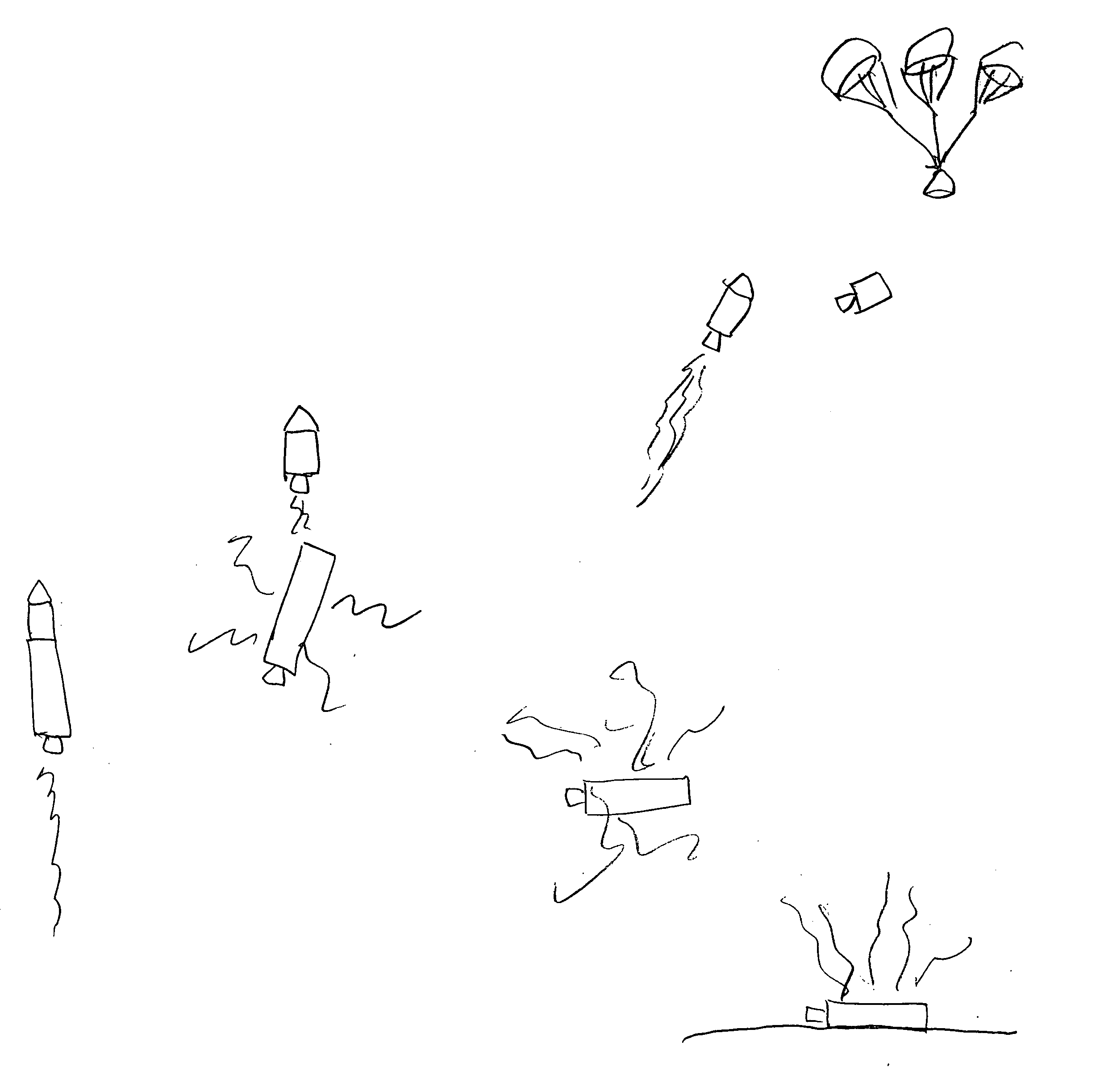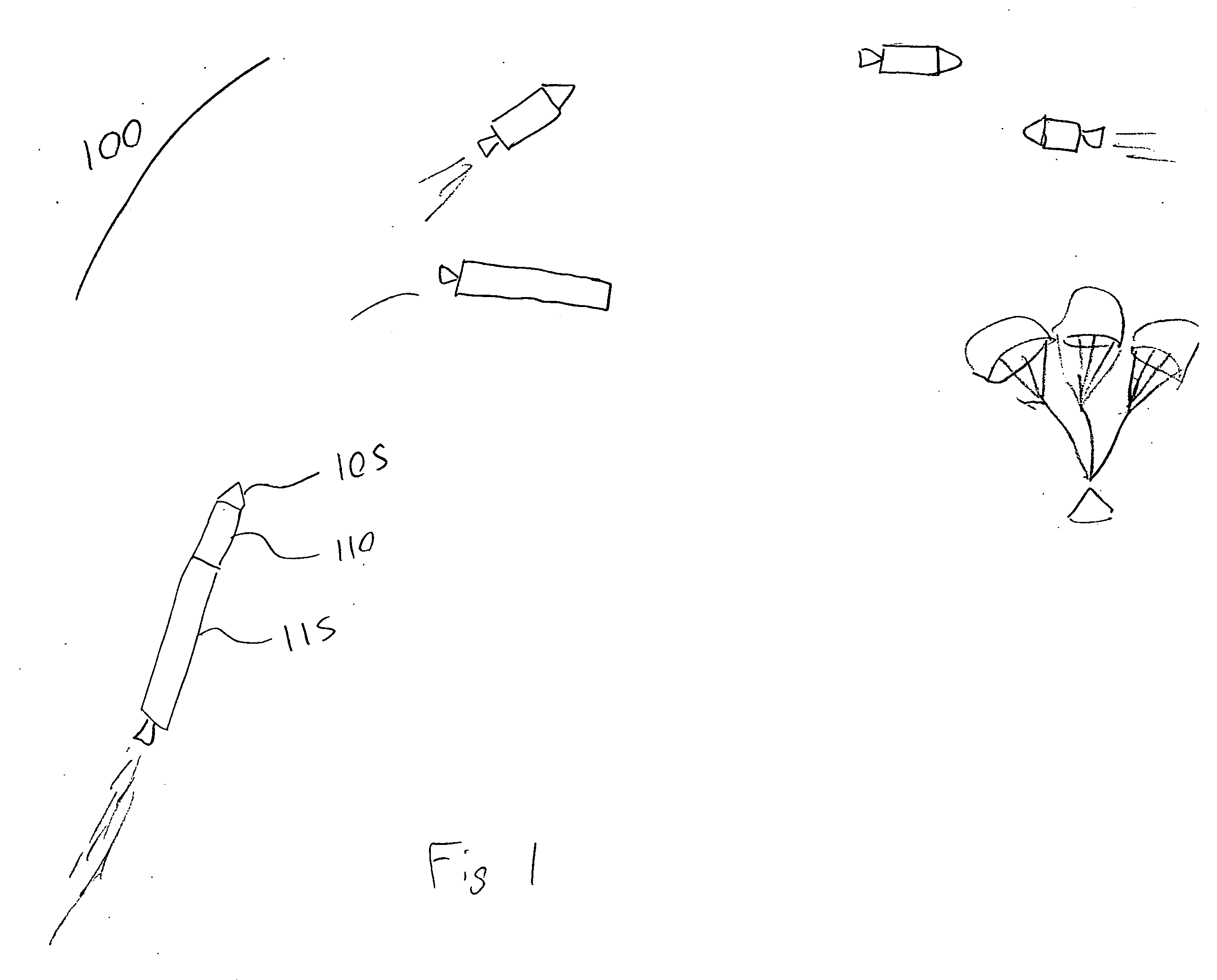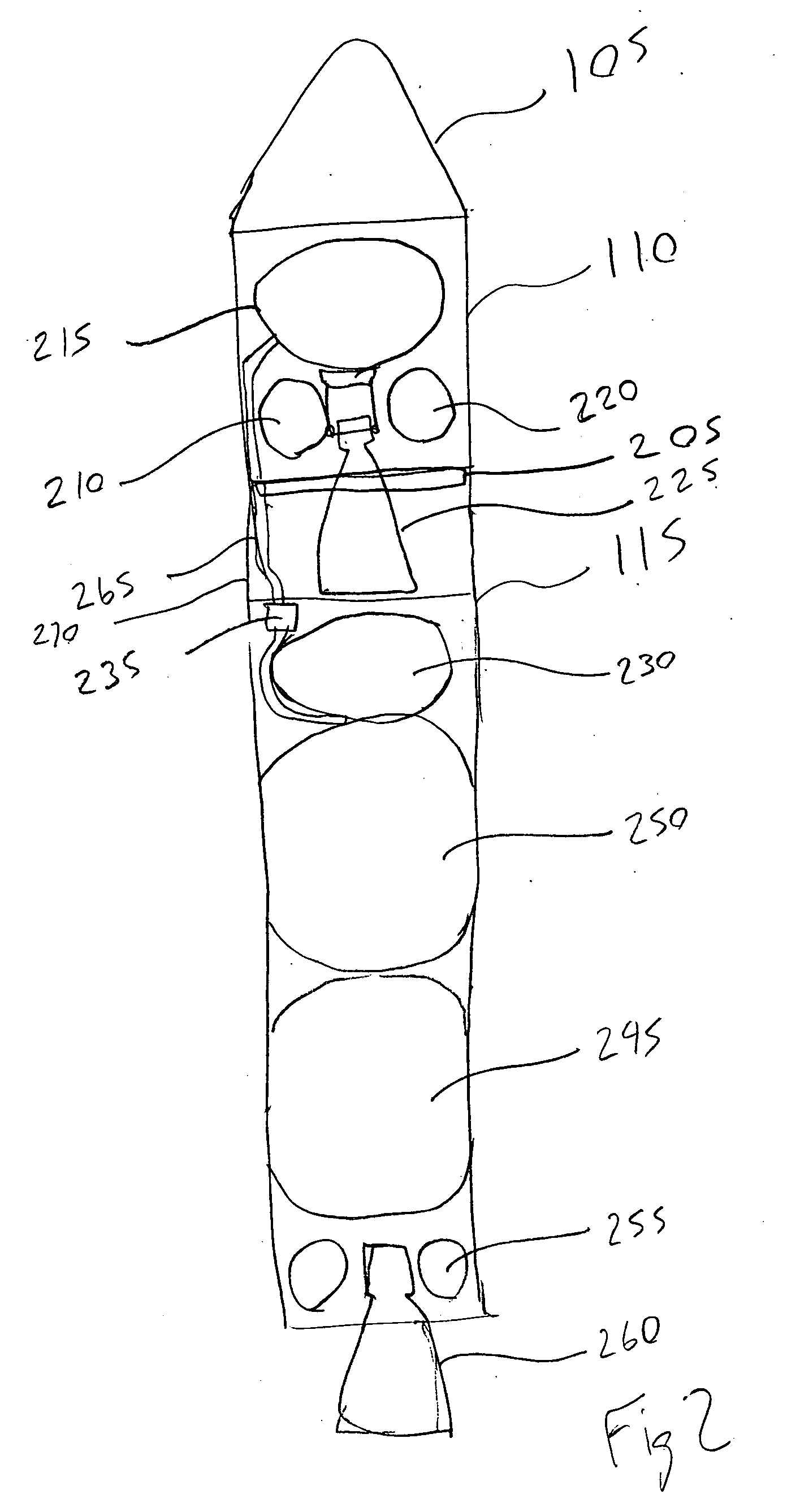Launch vehicle crew escape system
a technology for escaping systems and launch vehicles, which is applied in the field of spacecraft launch escape systems, can solve the problems of not being able to provide 1 g, the upper stage engine has too little thrust to provide acceleration, and the normal upper stage is not able to provide enough thrust for a launch abort system, so as to achieve the effect of increasing the acceleration it can provid
- Summary
- Abstract
- Description
- Claims
- Application Information
AI Technical Summary
Benefits of technology
Problems solved by technology
Method used
Image
Examples
Embodiment Construction
[0029]FIG. 1 is a pictorial sequence of a successful launch and reentry. As depicted, a successful launch and reentry sequence (100) under normal conditions is shown for a recoverable crew or cargo capsule. The capsule (105) is releasably connected to the upper stage (110), and the upper stage is releasably connected to the lower stage (115). On the launch pad, the majority of the oxidizer for upper stage (110) is stored in lower stage upper stage oxidizer reservoir (230). Near burnout of the lower stage (115), that oxidizer is transferred to the upper stage (110). After lower stage burnout, the stages separate and the upper stage (110) puts the capsule (105) into orbit.’
[0030]FIG. 2 is a cutaway schematic of a two stage launch vehicle equipped with the crew escape system. As depicted, the crew or cargo capsule (105) is located on top of the upper stage (110) and is connected to it by a release system (205). The upper stage (110) contains a fuel tank (210), oxidizer tank (215), pres...
PUM
 Login to View More
Login to View More Abstract
Description
Claims
Application Information
 Login to View More
Login to View More - R&D
- Intellectual Property
- Life Sciences
- Materials
- Tech Scout
- Unparalleled Data Quality
- Higher Quality Content
- 60% Fewer Hallucinations
Browse by: Latest US Patents, China's latest patents, Technical Efficacy Thesaurus, Application Domain, Technology Topic, Popular Technical Reports.
© 2025 PatSnap. All rights reserved.Legal|Privacy policy|Modern Slavery Act Transparency Statement|Sitemap|About US| Contact US: help@patsnap.com



